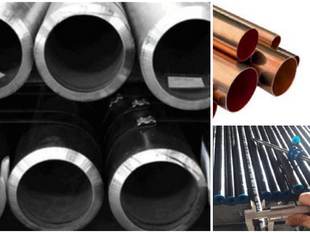
The Unsung Heroes of Engineering : FASTENERS
Ağu 29
3 dakikalık okuma
1
3
0
Fasteners are integral components in the world of engineering and manufacturing. Though often overlooked, these seemingly simple items play a critical role in the assembly and functionality of a wide range of products and structures. In this blog post, we will delve into the technical aspects of fasteners, exploring their types, applications, and the factors influencing their selection and performance.
1. What Are Fasteners?
Fasteners are mechanical devices used to join two or more components together. They create a stable connection through various methods, including threading, clamping, or adhesive bonding. Fasteners are classified into several categories based on their design, function, and application.
2. Types of Fasteners
a. Bolts and Screws
Bolts and screws are perhaps the most commonly used fasteners. Both are characterized by their helical ridges, known as threads, which enable them to secure components by turning them into a pre-drilled hole or nut.
Bolts: Typically used with nuts, bolts are designed for high-strength applications. They are often employed in structural applications and machinery. Bolts come in various head styles, including hex, square, and round, each suited to specific tools and applications.
Screws: Screws can be categorized into different types based on their thread design, including wood screws, machine screws, and self-tapping screws. Unlike bolts, screws often create their own internal threads in the material they are driven into.
b. Nuts and Washers
Nuts are used in conjunction with bolts to secure components. They come in various shapes, such as hexagonal (standard) and wing nuts (which can be tightened by hand).
Washers: These are thin, flat discs placed under the head of a bolt or screw to distribute the load and prevent damage to the workpiece. Washers can also provide a smooth surface for easier tightening and prevent loosening due to vibration.
c. Rivets
Rivets are permanent fasteners used to join materials by creating a deformation in the fastener's tail end. They are widely used in the aerospace industry, automotive manufacturing, and construction due to their strength and durability. Types of rivets include solid, blind, and pop rivets, each suited to different applications.
d. Anchors
Anchors are used to attach fasteners to materials like concrete, brick, or drywall. They expand within the material to create a secure hold. Common types include expansion anchors, toggle bolts, and chemical anchors.
3. Material Considerations
The material of a fastener significantly impacts its performance and suitability for specific applications. Common materials include:
Steel: Known for its high strength and durability, steel is often used for heavy-duty applications. Various grades of steel are available, including stainless steel for corrosion resistance and alloy steel for added strength.
Aluminum: Lightweight and resistant to corrosion, aluminum is used in applications where weight is a concern, such as in aerospace and automotive industries.
Plastic: Plastics like nylon and polypropylene are used in applications where electrical insulation or resistance to corrosion is required. They are also suitable for lightweight applications.
4. Performance Factors
Several factors influence the performance of fasteners:
Load-Bearing Capacity: The strength of a fastener is determined by its material, design, and dimensions. Ensuring that the fastener can withstand the expected loads is crucial for safety and functionality.
Corrosion Resistance: In environments exposed to moisture or chemicals, corrosion resistance is essential. Coatings like zinc plating or materials like stainless steel can enhance resistance.
Thermal Stability: Fasteners must maintain their properties under varying temperature conditions. Materials with high thermal stability are crucial for applications involving heat.
Vibration Resistance: Fasteners used in dynamic environments must resist loosening due to vibrations. Locking mechanisms, such as nylon-inserted lock nuts or thread-locking adhesives, can help address this issue.
5. Fastener Selection
Selecting the right fastener involves considering several factors:
Material Compatibility: Ensure the fastener material is compatible with the materials being joined to avoid issues like galvanic corrosion.
Load Requirements: Match the fastener’s load-bearing capacity with the demands of the application.
Environmental Conditions: Choose fasteners with appropriate coatings or materials for the specific environmental conditions.
Installation Method: Consider the ease of installation and the tools required.
Conclusion
Fasteners may be small, but their role in engineering and manufacturing is monumental. Understanding the different types, materials, and performance factors can greatly influence the success of a project. By selecting the right fasteners and applying best practices in their use, engineers and manufacturers can ensure structural integrity, safety, and longevity in their designs.
As technology advances and new materials and designs emerge, the field of fasteners continues to evolve. Staying informed about these developments is crucial for optimizing performance and innovation in engineering applications.






